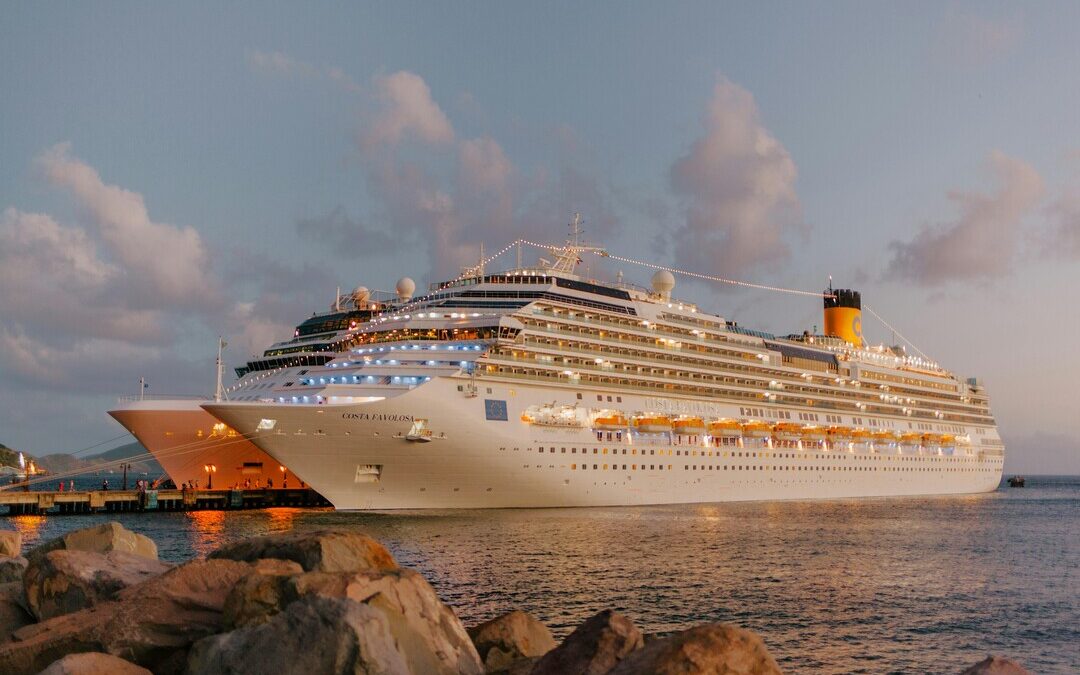UN Maritime Body Approves 1st Global Carbon Tax for Shipping Industry
The UN shipping agency backs the first global carbon tax, aiming for net-zero emissions from ships by around 2050.
Sixty-three countries have agreed to implement the world’s first global carbon tax in the shipping industry, endorsing a sweeping set of draft regulations to curb greenhouse gas emissions and align the sector with international climate targets.
The International Maritime Organization approved draft regulations establishing a legally binding framework to cut greenhouse gas emissions from international shipping, marking a major step toward net-zero targets for the sector by around 2050.
The proposed IMO Net-Zero Framework, approved during the Marine Environment Protection Committee’s 83rd session this week, introduces a combination of mandatory emissions limits and greenhouse gas pricing for an entire industry.
Set to be formally adopted in October 2025, the new rules will apply to large ocean-going vessels over 5,000 gross tonnage — accounting for roughly 85 percent of carbon dioxide emissions from international shipping. The regulations are expected to enter into force in 2027.
Emissions Targets and Fuel Standards
“The approval of draft amendments to MARPOL Annex VI mandating the IMO Net-Zero Framework represents another significant step in our collective efforts to combat climate change,” IMO Secretary-General Arsenio Dominguez said at the close of the meeting. “It demonstrates that IMO delivers on its commitments.”
Under the draft rules, ships will be subject to a Global Fuel Standard, requiring gradual reductions in their annual GHG fuel intensity — measured using a well-to-wake approach — and a Global Economic Measure that prices emissions.
The well-to-wake approach evaluates emissions across the entire lifecycle of a fuel, providing a holistic view of the fuel’s environmental footprint.
Ships emitting above threshold levels must acquire “remedial units,” while those exceeding compliance targets can earn and trade “surplus units.”
IMO Net-Zero Fund and Financial Incentives
A key framework mechanism will be the IMO Net-Zero Fund, financed by emissions-related contributions.
The fund will reward low-emission vessels, support technology innovation and infrastructure in developing nations, and assist vulnerable states such as small island developing states and least developed countries in managing transition costs.
The measures form a new Chapter 5 of MARPOL Annex VI, a treaty that already includes mandatory energy efficiency rules and has 108 Parties representing 97 percent of the world’s merchant fleet by tonnage.
Industry observers see the framework as a milestone in aligning shipping — a sector responsible for nearly 3 percent of global GHG emissions — with international climate goals.
The IMO hopes the initiative will accelerate the adoption of zero and near-zero emission fuels and technologies while promoting a just and equitable energy transition.
Broader Marine Environment Protection Agenda
Other key outcomes from MEPC 83 included adopting a 2025 action plan to combat marine plastic litter, progress on ballast water management reform, and preliminary approval to designate the North-East Atlantic as an Emission Control Area.
A legally binding biofouling framework and draft regulations for onboard carbon capture systems also received the green light for further development.

